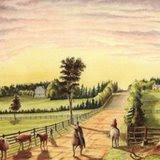Feds may still want to oversee city farm
Speaker says potential native land claims could impact future of major property.
By Nigel Armstrong
The Guardian
Agriculture
“I have the feeling that they do,” said Doug Shouldice, president of the citizen’s group that supports
He was guest speaker at the annual meeting of Friends of the Farm P.E.I.
Shouldice said after the meeting that he has never been told on or off the record that the federal department wants to back away from plans to abandon the over 80 acres of land in the centre of Charlottetown. Rather it was a gut feeling he gets when dealing with his group’s issues in
For one thing, any change of ownership in the
“At one point, (Agriculture
“That was three, four years ago but it’s still here. Nothing, at this moment, is going to be closed.
“We went through that same thing in
Sitting in the heart of urban
A group of concerned citizens formed a support group for the
It offered to find groups and people to maintain parts of the farm and soon there were volunteer teams and organizations looking after the arboretum, the peony beds, the lilac trees and now there are plans of hand-planting 23,000 trees in the coming years. Books have been or are about to be published, there are fundraising events, Victorian tea socials, trails and public gardens.
“The most important thing we offer is the daily work we are doing, the labour, all volunteer,” said Shouldice.
In 2003, Agriculture and
The same could happen in
“You can’t just say ‘I want the farm,’ ” he said. “You have to come with something you can add to (the uses for the land). They say no to us, as well, but there is a lot that they let us do. We are giving them 15,000 hours of labour a year and that counts for something.”
There was a strong hint at the meeting that the
“We have had meetings with the university and we are keeping our fingers crossed, hoping we will be included in their plans,” said Connie MacKay-Carr, a member of Friends of the Farm.
